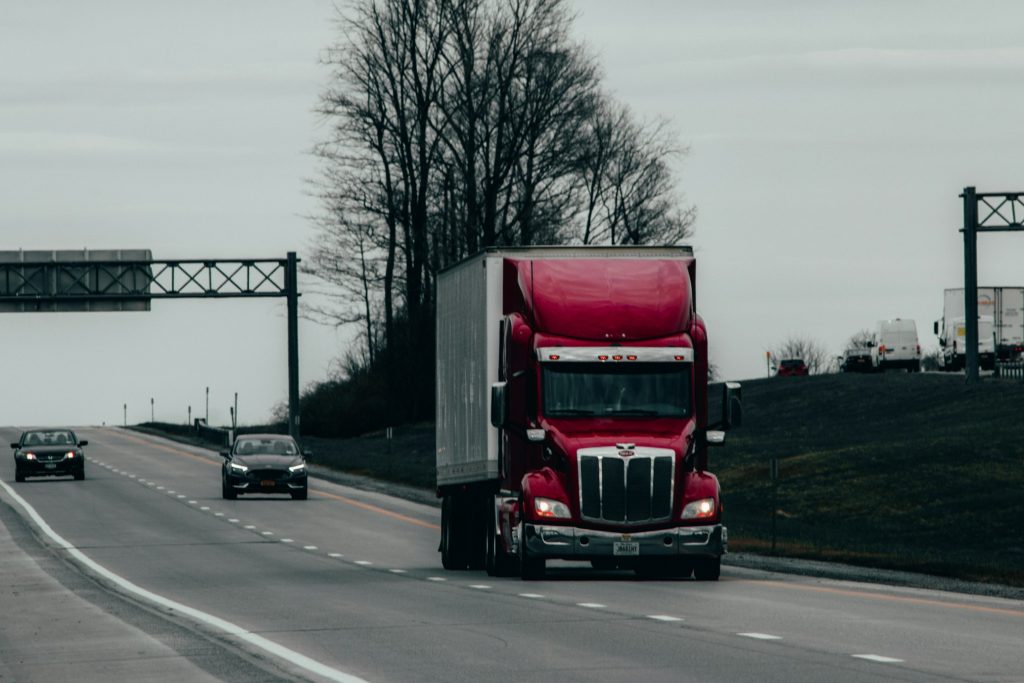How Long-Distance Transportation Businesses Can Keep Their Fleet Secure
The country’s vast network of highways is crucial for long-distance transportation. However, trucks traveling these long distances often face security challenges, especially when left unattended during rest stops. Ensuring the long-distance fleet security and safety of these vehicles and their cargo is a major concern for transportation businesses.

Source: Unsplash
Implementing effective security measures is essential to protect both the trucks and their contents. Several strategies can help achieve this goal. In this article, we’ll explore various approaches that long-distance transportation companies can adopt to safeguard their fleets.
Choosing Secure Locations for Parking
The long stretches of highway often leave drivers with limited options when it comes to parking. The fact that trucking is one of the most stressful jobs only worsens this issue. As per a 2023 survey by DAT Freight & Analytics, 75% of truck drivers find their job to be mentally and physically taxing.
Prioritizing secure semi-truck parking facilities can help. Opt for locations with well-lit areas, fencing, security patrols, and limited access points. Consider partnering with truck stop chains that offer designated parking areas for trucking companies. You can look for a monthly semi-truck parking arrangement to maximize your savings and minimize time to find a spot.
According to Big Rig Parking, these semi-truck parking spaces provide a controlled environment for drivers to rest and ensure vehicle safety. These areas can be equipped with additional long-distance fleet security measures like high-definition cameras, access card readers, and even on-site security personnel.
Equipping Trucks with Advanced Security Technology
Modern technology offers various tools to enhance fleet security. GPS tracking systems provide real-time location data, allowing dispatchers to monitor vehicle movement and detect suspicious deviations.
GPS trackers help fleet managers optimize routes, improve customer service, and secure cargo. Accuracy remains a top priority, pushing the development of GPS trackers that provide exact location data.
Security features, such as theft recovery capabilities, contribute to the rising use of GPS tracking technologies. Future Market Insights also projects that due to high demand, the GPS tracker market will hit a valuation of $7,228 million by 2034.
Geo-fencing technology can establish virtual perimeters around authorized parking areas, sending alerts if a truck strays outside these boundaries. Additionally, installing video surveillance systems within the truck cabin and on the exterior can deter theft attempts and provide valuable evidence.
Beyond core tracking and monitoring functionalities, consider investing in advanced sensor technology. For instance, door and trailer seal breach sensors can trigger immediate alerts if a cargo compartment is tampered with. Similarly, fuel tank level sensors can help identify potential fuel theft attempts during rest stops.
Implementing Thorough Driver Screening and Training
The human element is central to any long-distance fleet security strategy. Employing responsible drivers with clean backgrounds is essential. Conducting complete background checks, including criminal history and motor vehicle records, assists with the identification of possible risks. Additionally, equipping drivers with sufficient security training allows them to recognize and avoid dangerous situations.
Justia notes that trucking companies may attempt to cut costs by hiring drivers without a valid and current commercial driver’s license (CDL). Even if a driver is licensed and qualified, CDL training might not adequately prepare them for driving, as these courses are often brief. They tend to emphasize classroom instruction over practical, on-the-road training, leaving novice truckers feeling nervous.
Formal truck driver training can cover topics such as secure cargo loading practices, recognizing signs of tampering, and reporting suspicious activity. Training should not be limited to a single event, and refresher courses should be scheduled regularly. This will ensure that drivers are up to date on the latest security procedures and best practices.
Additionally, consider incorporating security awareness programs that encourage a culture of vigilance among drivers. This can involve rewarding drivers for identifying and reporting security breaches and promoting a sense of shared responsibility for fleet safety.
Maintaining Consistent Communication with Drivers
Clear communication between dispatchers and drivers is vital for maintaining a secure fleet. Regularly scheduled check-ins allow dispatchers to monitor driver well-being and ensure adherence to routes and schedules.
According to Supply Chain Brain, logistics companies are developing tools to provide a simplified user experience for shippers, carriers, and receivers. Drivers should be able to connect to an SMS platform from any device, get essential messages fast, and communicate effortlessly. These tools must be user-friendly so that drivers can utilize them without substantial training.
Moreover, equipping drivers with two-way communication devices facilitates immediate reporting of any suspicious activity or security breaches. Establishing clear protocols for emergencies empowers drivers to respond effectively to unpredictable scenarios.
FAQs
What is a truck parking area called?
A truck parking area is commonly referred to as a truck stop, rest area, or truck rest area. These locations provide parking spaces, fueling stations, and various amenities for truck drivers. They are essential for drivers to take mandatory rest breaks and manage fatigue.
Why is truck driver training important?
Truck driver training is crucial for ensuring safety on the road. It equips drivers with the skills needed to handle large commercial vehicles and navigate various driving conditions. Proper training helps reduce accidents, improves fuel efficiency, and ensures compliance with regulations.
Why is communication important in trucking?
Communication is vital in trucking to ensure the smooth coordination between drivers, dispatchers, and clients. It helps in promptly addressing issues, adjusting schedules, and providing updates on delivery status. Effective communication enhances operational efficiency and safety.
Securing million-dollar rigs and their precious cargo requires a multi-layered approach. While well-lit parking and advanced tracking systems deter theft, driver vigilance is equally important. Investing in comprehensive driver training empowers them to identify and report security risks.
Clear communication between drivers and dispatchers ensures real-time monitoring and enables swift response to emergencies. Trucking companies can improve long-distance fleet security and create a safer environment for drivers and their valuable cargo by prioritizing security across these different aspects.

